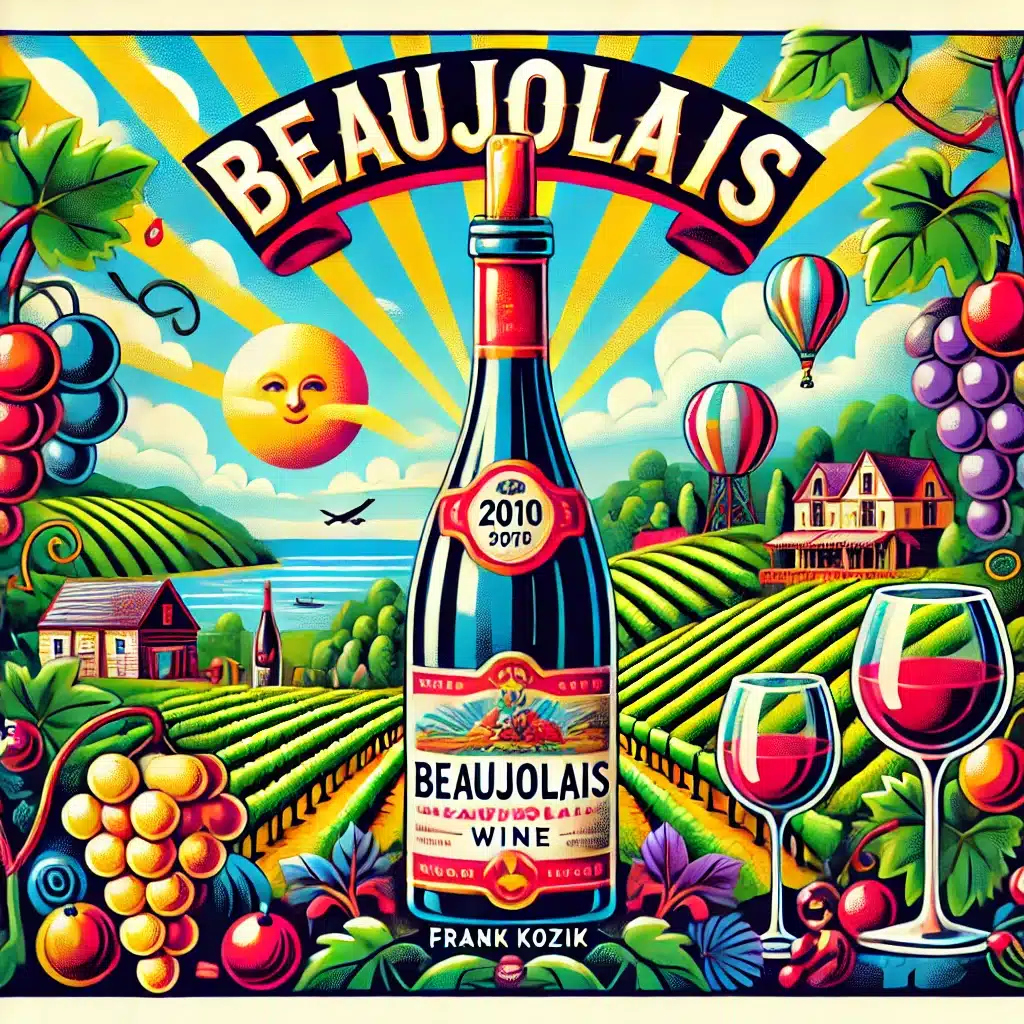Misunderstood Beaujolais
Beaujolais is an often misunderstood region just south of Burgundy. For the past two decades, the area has turned from easy-drinking wines to a style that balances delight and complexity. It is a place where light-hearted wines and creativity are allowed to thrive.
The specter of Beaujolais Nouveau haunts the region that dreaded bubble-gum wine that so many Americans loved decades ago. The region’s best winemakers consistently showcase their excellent wines, but their efforts are sidelined every Thanksgiving. In nearly every wine shop across America, November means stacks and stacks of insipid Beaujolais Nouveau.
Come January, the region’s celebrated winemakers once again argue that they produce quality vintages that can compete with their Burgundian neighbors to the north.

The Grapes of Beaujolais
The region’s red wine is produced using Gamay Noir. It was also widely grown in Burgundy until the Dukes of Burgundy outlawed it several centuries ago. Gamay thrives in the region’s granitic soils. The area also produces a small amount of white wine, featuring the Chardonnay grape.
Burgundy?
Although administratively and politically a part of Burgundy, Beaujolais has a decidedly different approach to wine and is generally set apart from the rest of the district.
Beaujolais Nouveau
Nouveau is a quick-fermenting wine style that takes as little as two months from harvest to bottle. Compare that to the traditional one to five years of aging. Most of the wine was consumed locally until the 19th Century when railroads allowed Beaujolais’s popularity to spread.
Under master businessman Georges Duboeuf, the annual release of Beaujolais Nouveau turned from a local celebration to a national one and then into a worldwide frenzy.

End of an Era
Unfortunately, the craze had faded by the mid-1980s. By the early 1990s, France had over 1.1 million cases of unwanted Nouveau to discard. In addition, selling any bottle of Beaujolais became difficult as the public associated the region with inexpensive wine that could not age.
However, with standout recent vintages, the wines are again beginning to resurface.
Fine Wine from Beaujolais
By law, Beaujolais wines are divided into three quality categories: Beaujolais, Beaujolais-Villages Wine, and Beaujolais Cru. Of the three, the most important (quality-wise) are labeled Beaujolais Cru.
Terroir
The entire region has approximately 42,000 acres (17,000 hectares) under vine. To the west is the Monts de Beaujolais, and the Saone River valley borders the east.
The region enjoys a semi-continental climate with Mediterranean influences. The summers are hot and dry, and the winters are cold. The weather plus granitic soils provide a winning combination for Gamay wine, which has supple fruit, refreshing acidity, and excellent structure.
The Two Regions of Beaujolais
The northern (Haut) region contains desirable granite soils. The southern (Bas) region is flat and composed primarily of clay and sedimentary rock. The most basic versions of Beaujolais and Beaujolais-Villages (including Nouveau) are grown in the south.
Beaujolais Crus
The Cru of Beaujolais consists of ten villages that produce first-rate wines. They are all located on granite hills in the northern (Haut) region. The steep granite-based soils produce denser, richer, and more expressive Gamay that can age.
These wines will be labeled under their AOCs, so it is worth becoming familiar with their names and styles to know what to buy. The ten crus are; Brouilly, Chenas, Chiroubles, Cote de Brouilly, Fleurie, Julienas, Morgon, Moulin-a-Vent, Regnie and St. Armour.
Two crus that stand out, in particular, are Cote de Brouilly and Morgon.
Cote de Brouilly
The vineyards of Cote de Brouilly cover the slopes of the ancient dormant Mont Brouilly volcano in the heart of the Beaujolais region. The much larger Brouilly appellation surrounds them.
Although covering one of the smallest areas, just 751 acres (304 ha), the simultaneously meaty and elegant wines of Cote de Brouilly pack a big, flavorful punch with an aging potential of four to six years. Brouilly is named for ancient Roman lieutenant Brulius, the first to plant vines over 2,000 years ago.
Morgon
Situated on the south and southwest-facing hills to the west of the Saone River, Morgon is the second-largest cru in the region at 2,745 acres (1,111 ha). The area comprises distinctive and challenging soil, including decomposing schist and granite with Paleolithic volcanic influence.
Cote du Py
On the southern border of Morgon is the famous hill Cote du Py. This area is known to impart earthy complexity and robust structure that develops and softens with age, a feature reminiscent of the more celebrated regions of Burgundy. An exceptional assemblage of producers passionate about old viticulture practices yields Gamay much denser than other regions.
Winemaking Styles

Carbonic Maceration
Winemakers here use a style unique to the region: carbonic maceration or whole cluster fermentation. Whole bunches are placed into fermentation tanks, and those on top crush the grapes on the bottom. The juices released ferment, filling the sealed tank with carbon dioxide. The CO2 permeates the fruit’s skin, beginning the fermentation process inside the uncrushed berries.
This method produces wines with explosive fresh fruit, minimal tannins, and a lot of color and is the secret sauce behind Beaujolais Nouveau. These winemakers add the cultured yeast 71B, sugars to pump up alcohol levels, and thermovinification to make vast quantities of cheap, artificial-tasting wines for the popular November release. After the fall of Nouveau and the subsequent years of tormented sales and tarnished reputation,
Biodynamic Farming
Fabulous vintages of biodynamic wines are rescuing the region’s reputation, specifically the legendary winemakers Lapierre, Thevenet, Foillard, and Brenton. These stalwarts of biodynamic farming faced the challenge of producing world-class wines and changing long-held dismissive opinions.
Biodynamic winemaking can be considered a religion for winemakers, except it is steeped in logic and good farming practices. Chaptalization and filtration practices are also discarded. As a result, winemakers in the region are ‘green’ in many ways, focusing on protecting ecosystems and actively contending with soil erosion.
Sign Up & Save on All Classes!
Join our newsletter today and unlock exclusive offers and wine education insights straight to your inbox!
